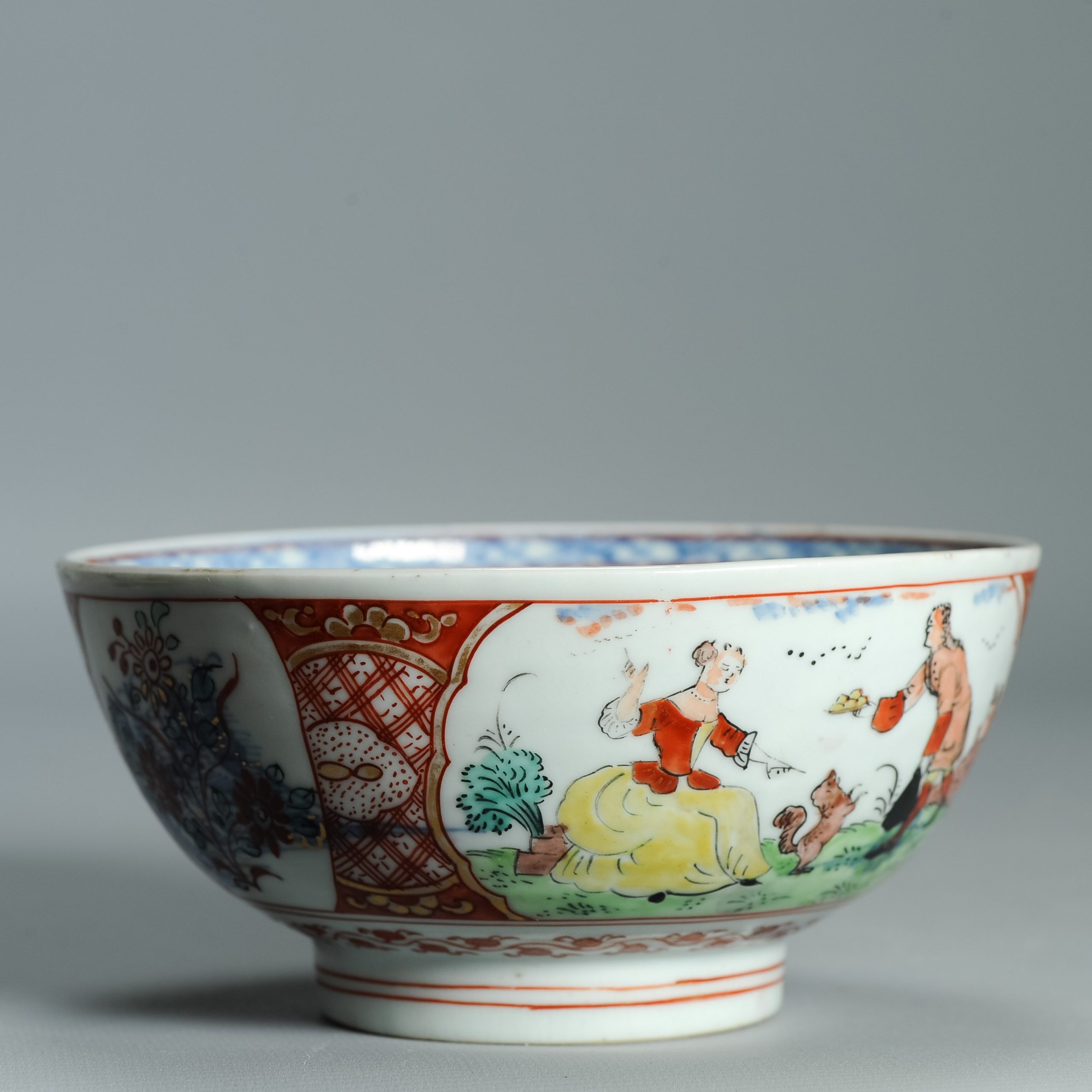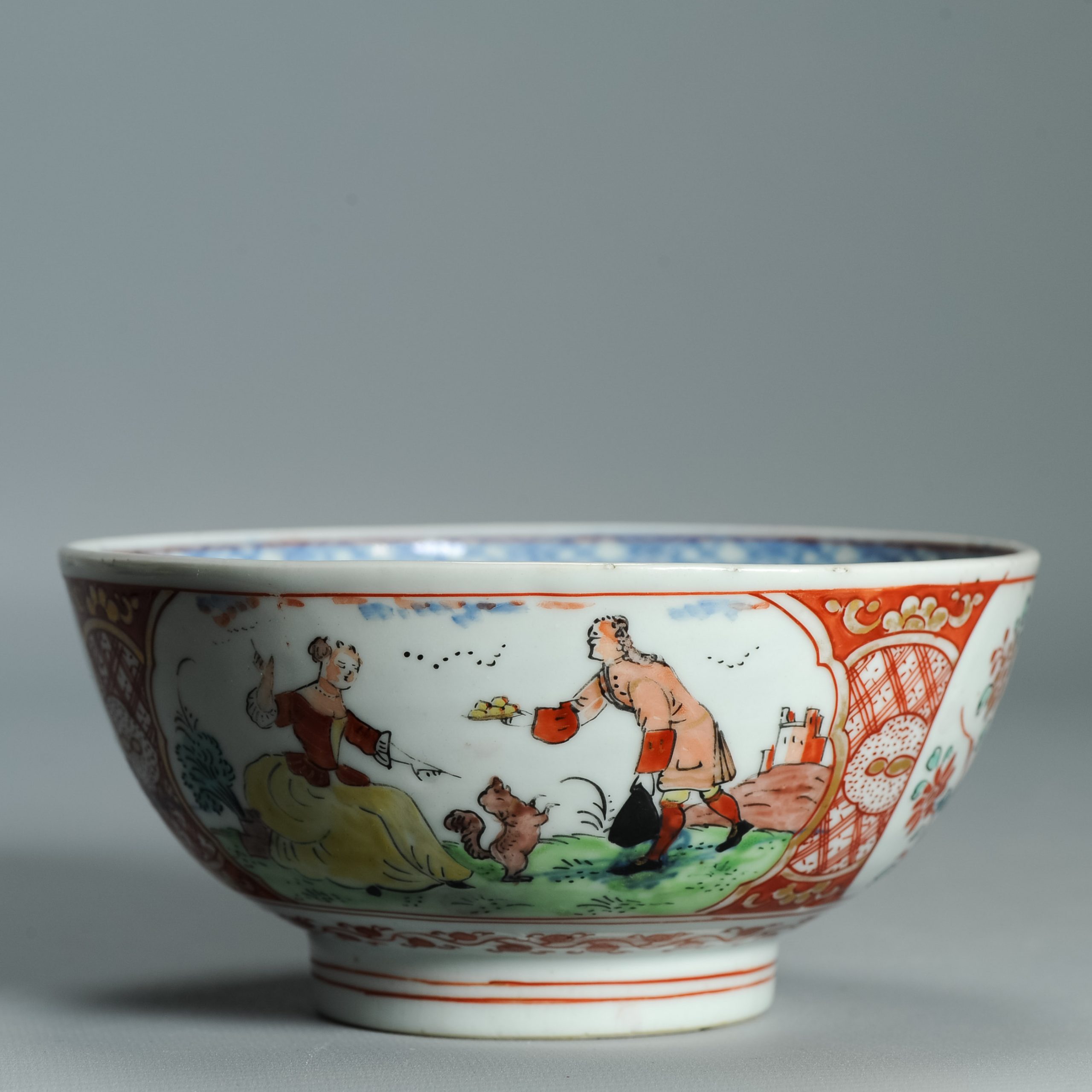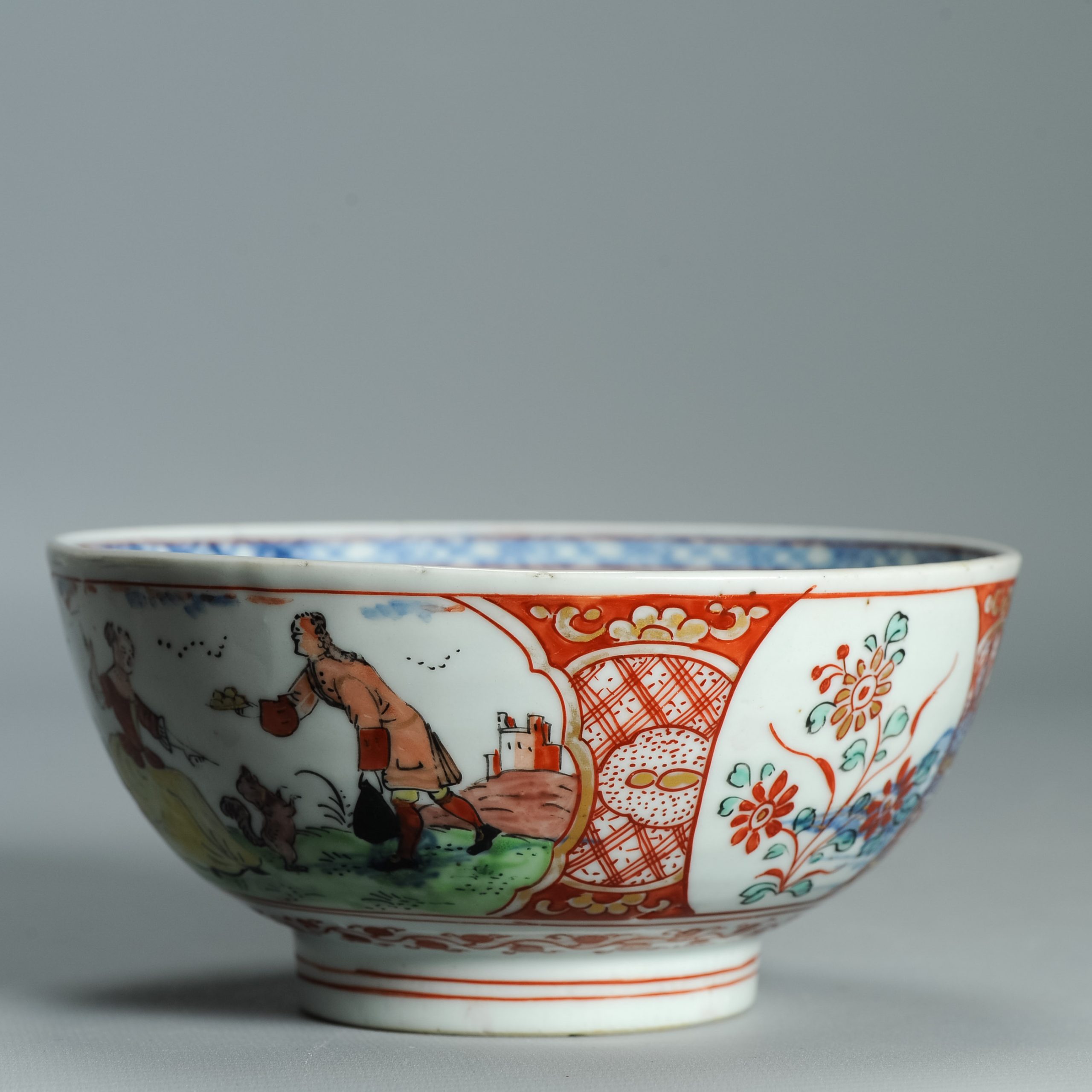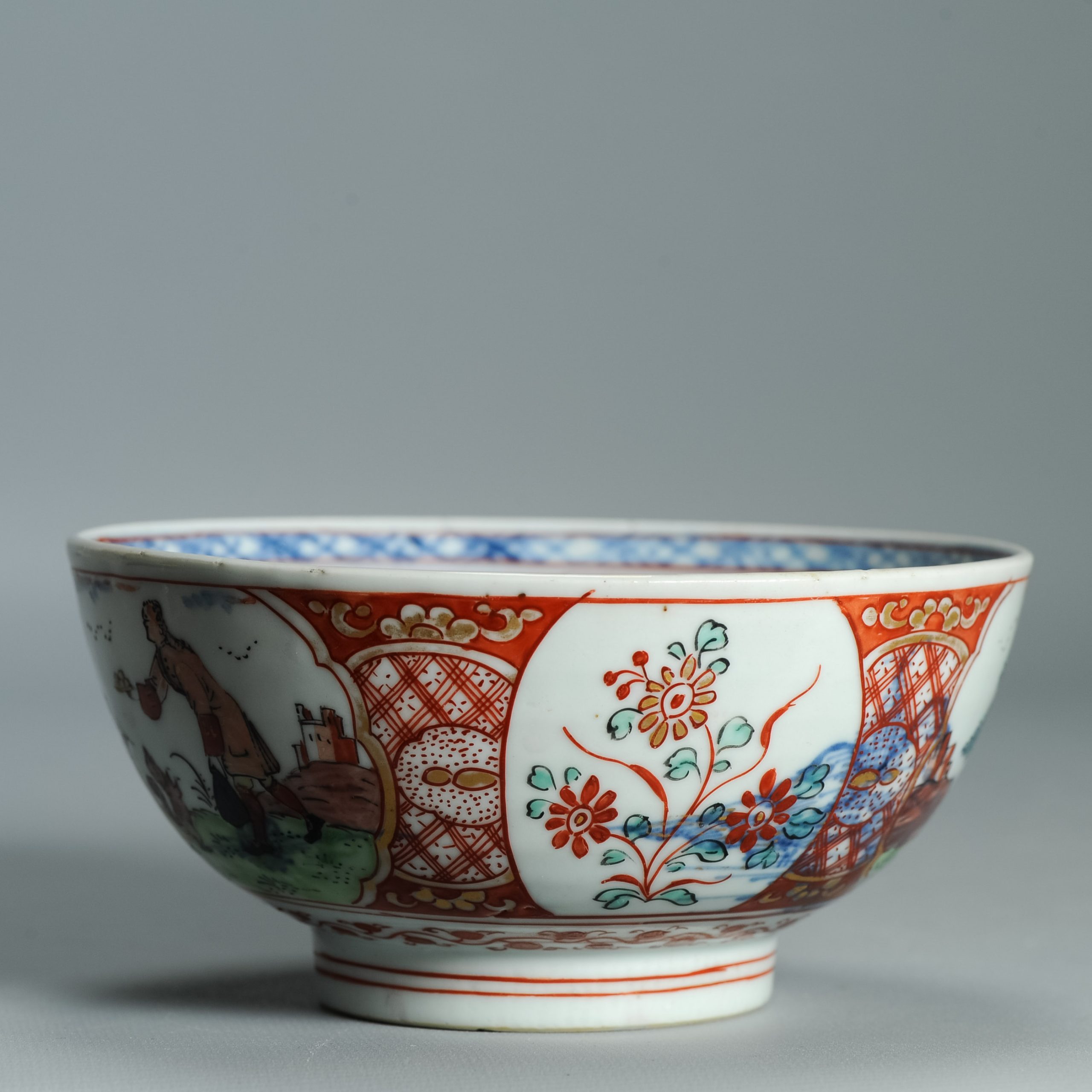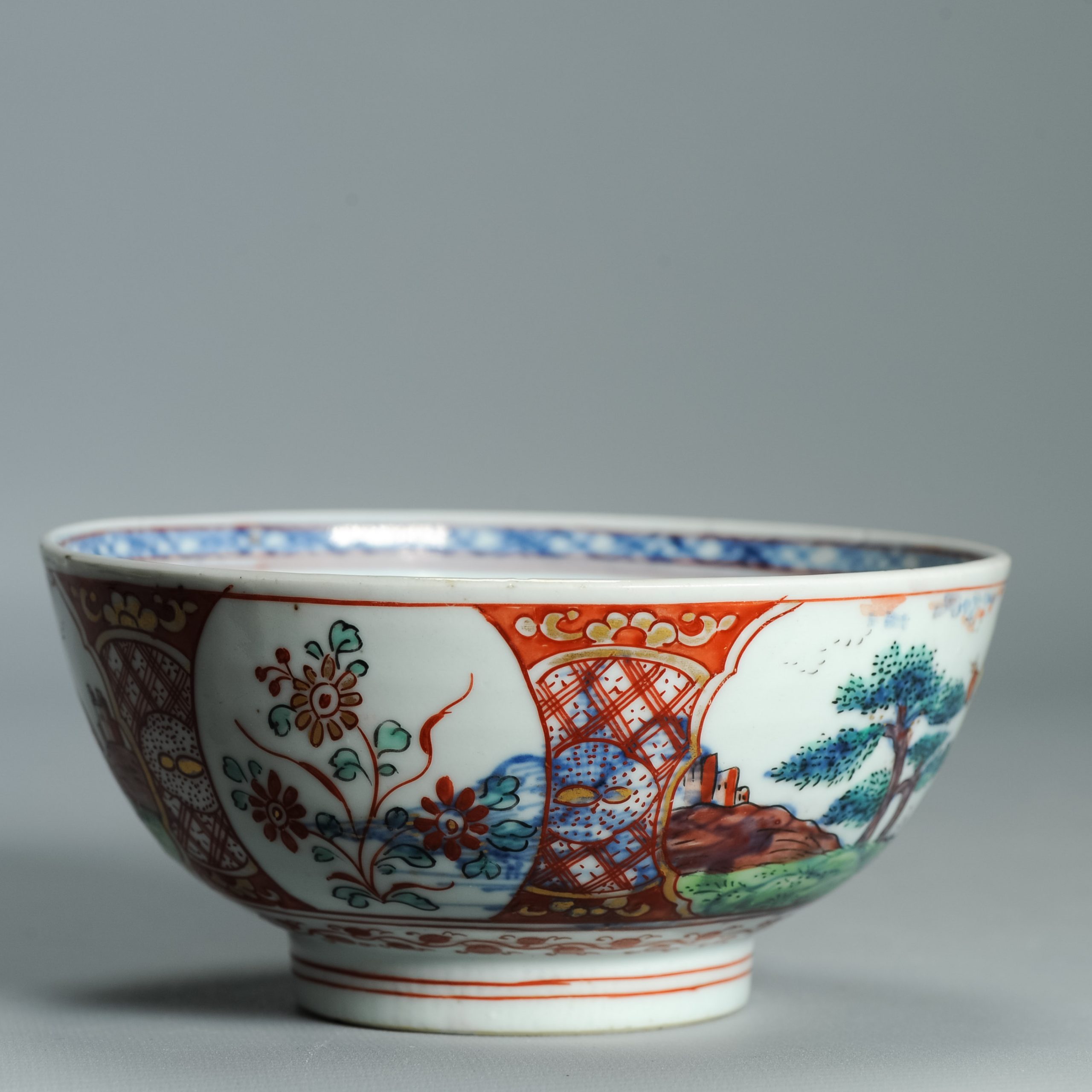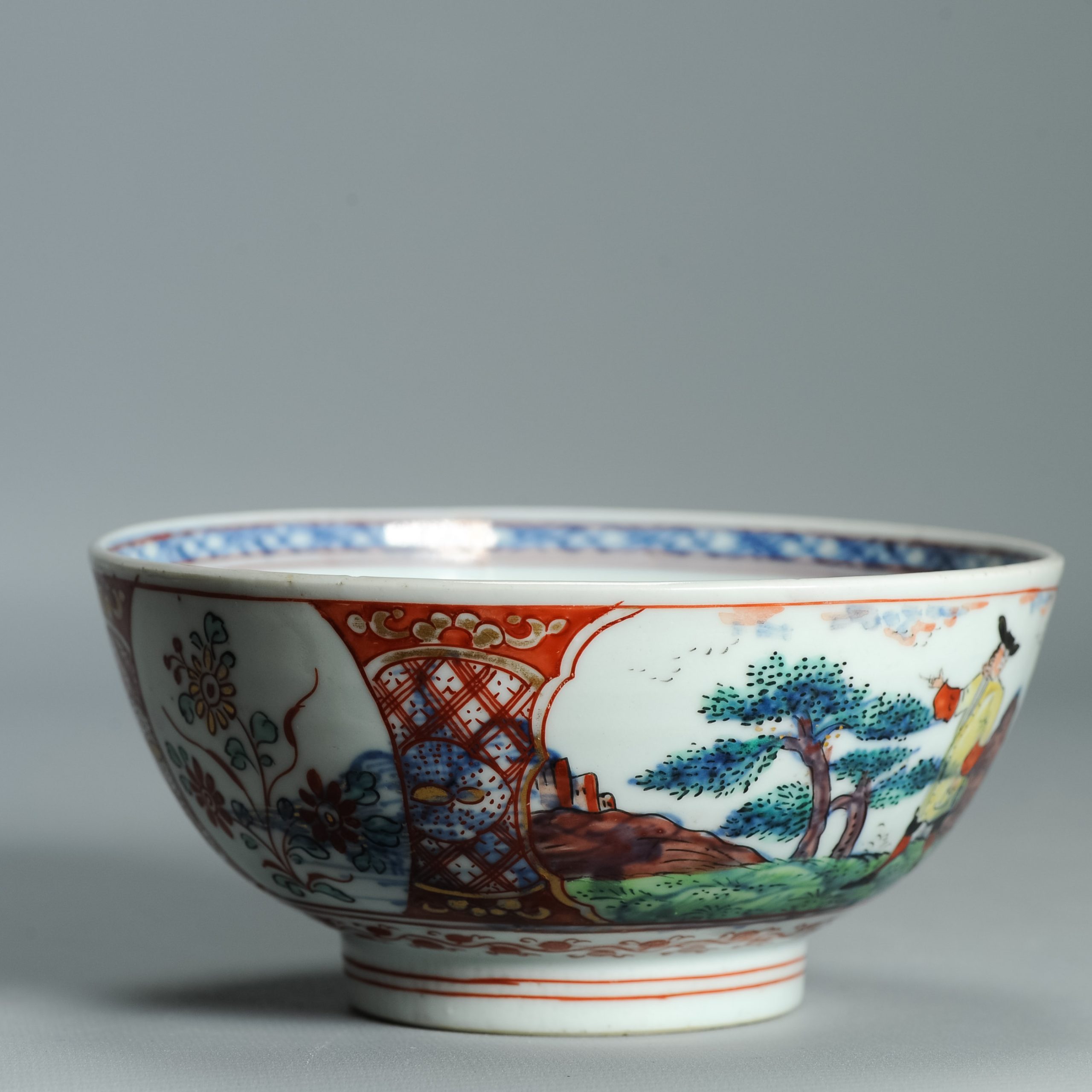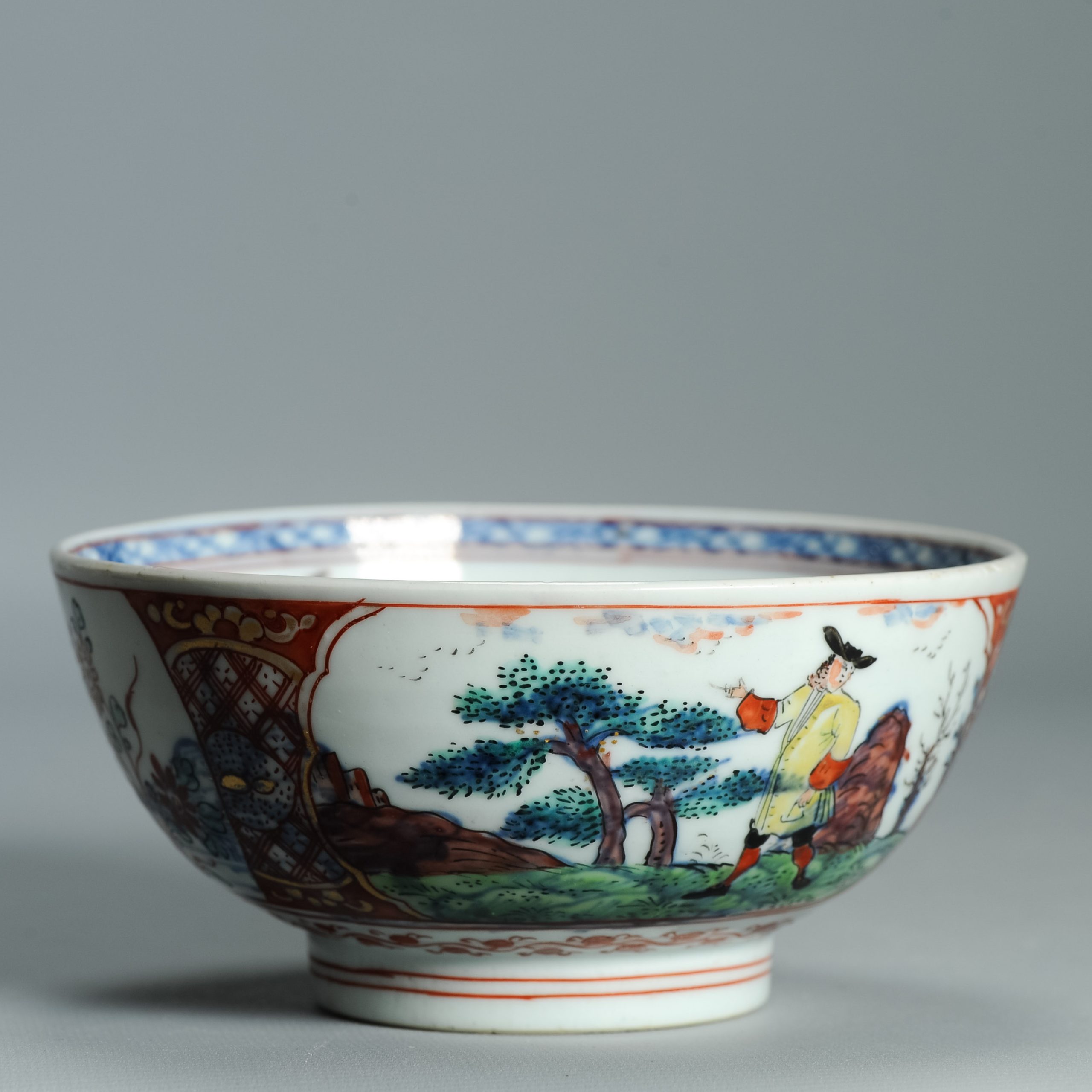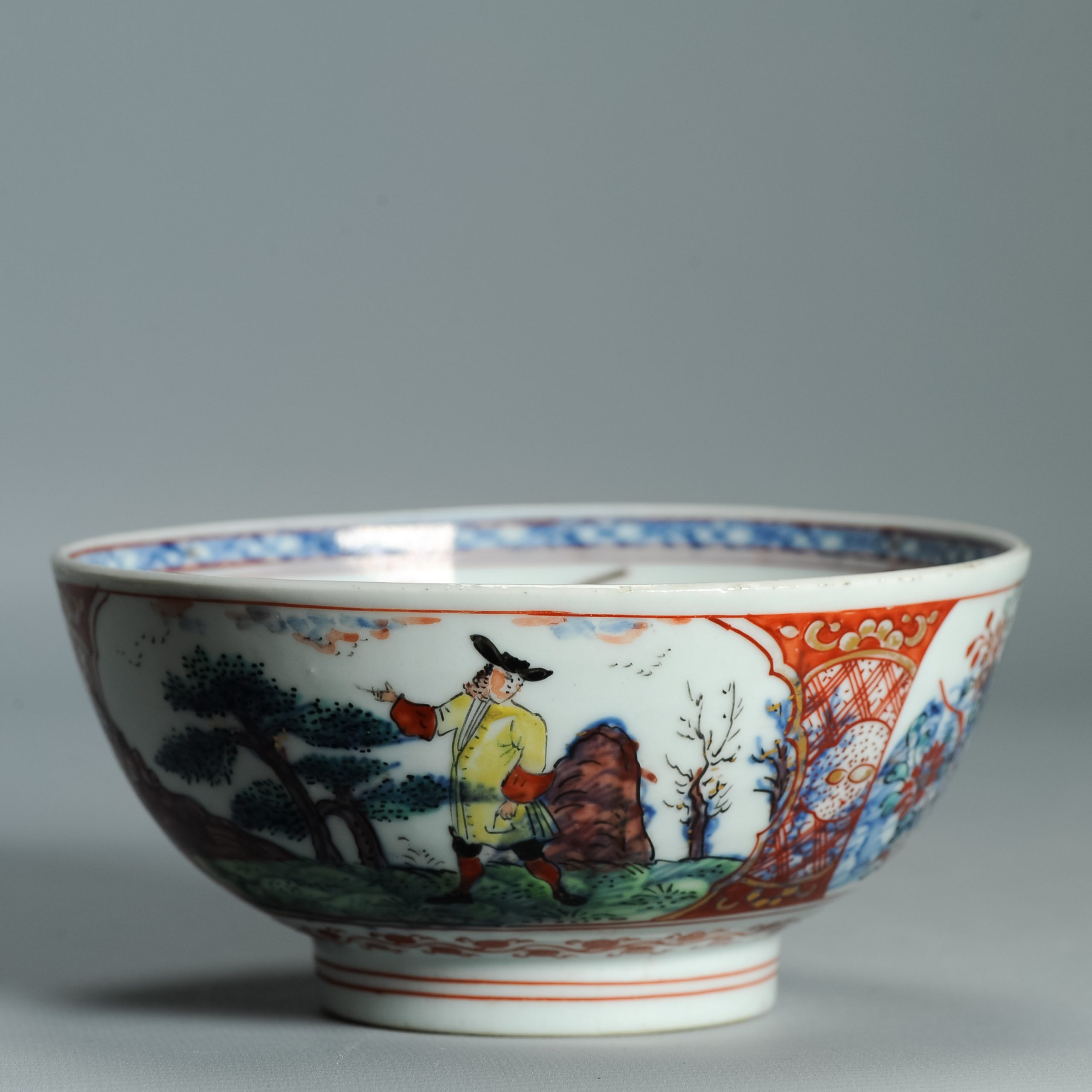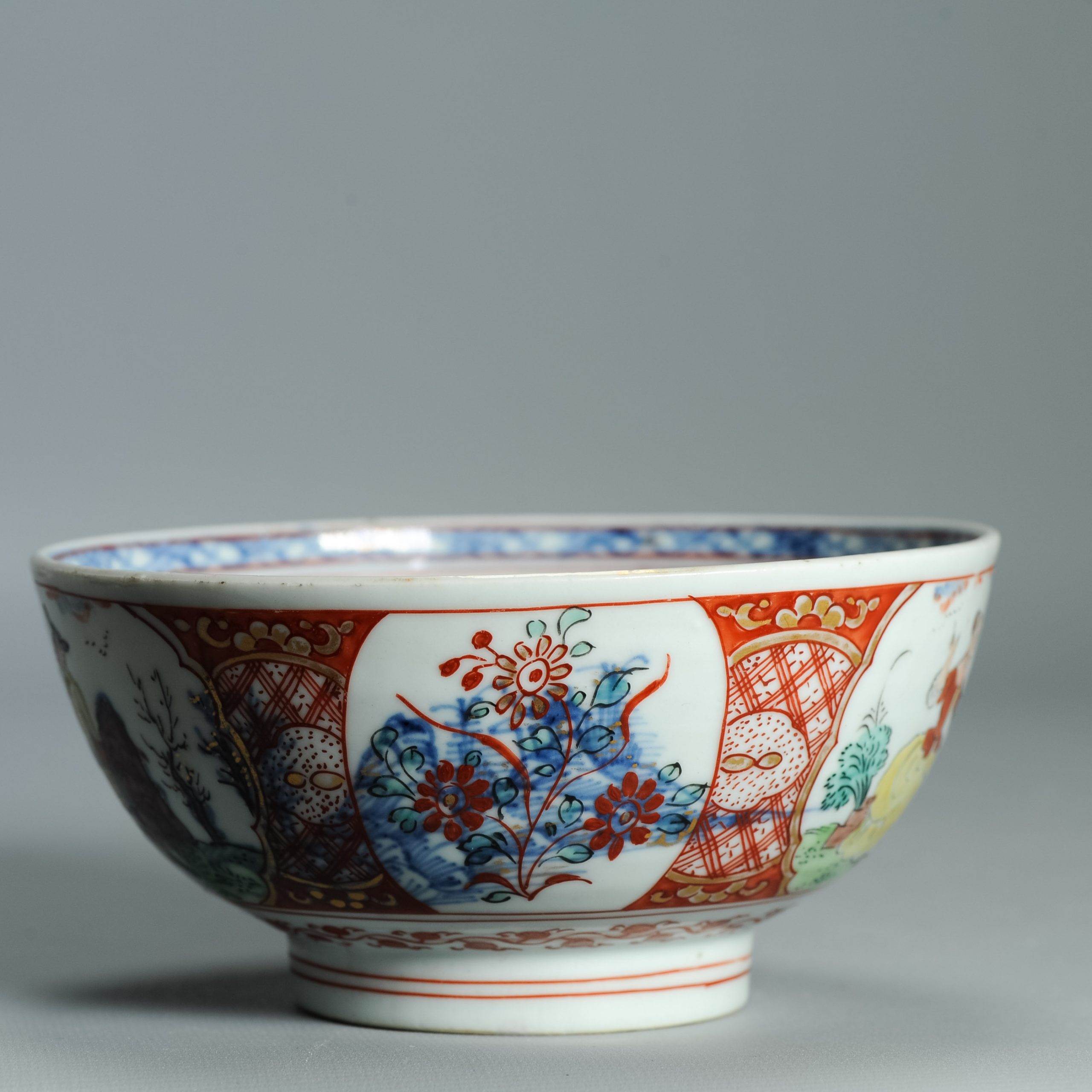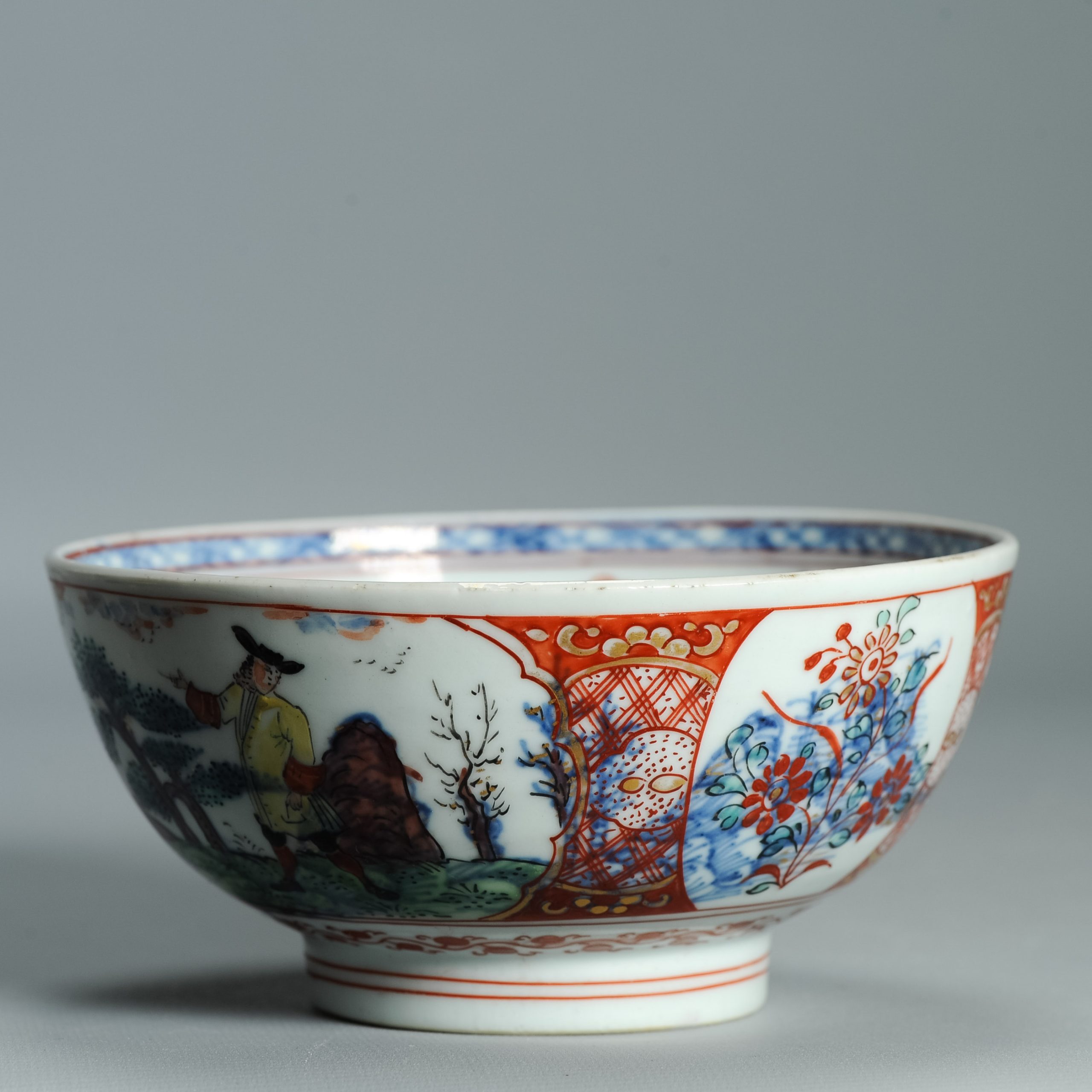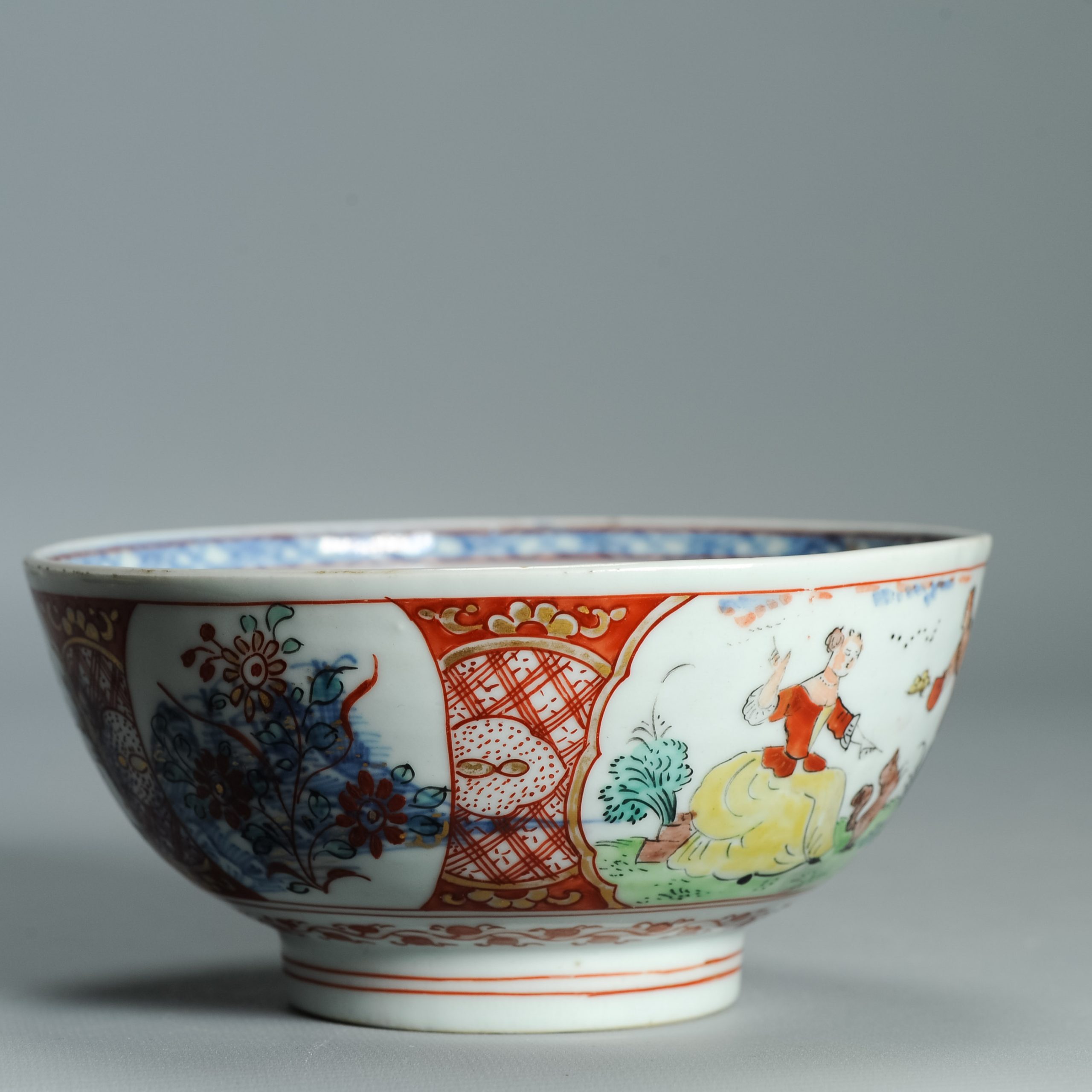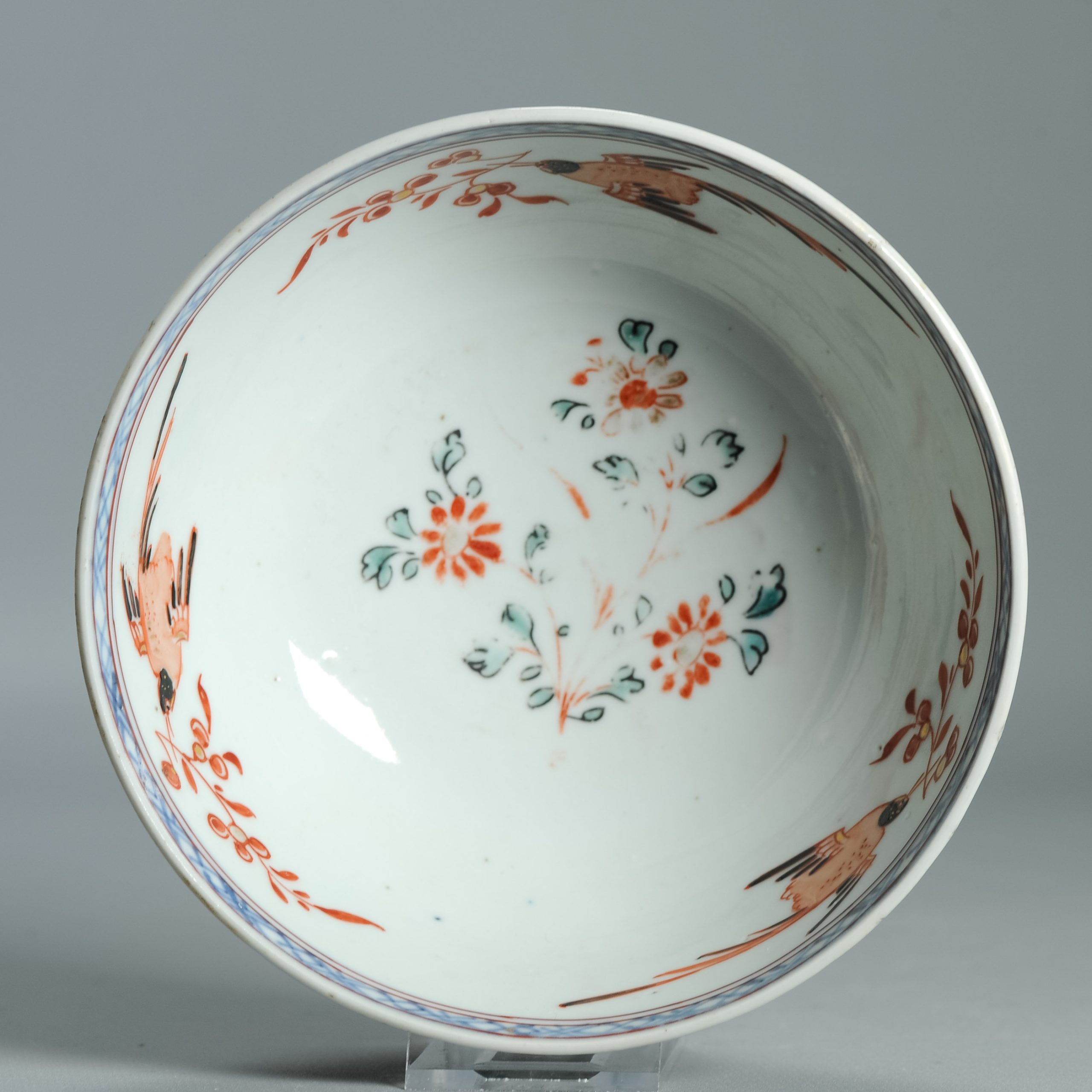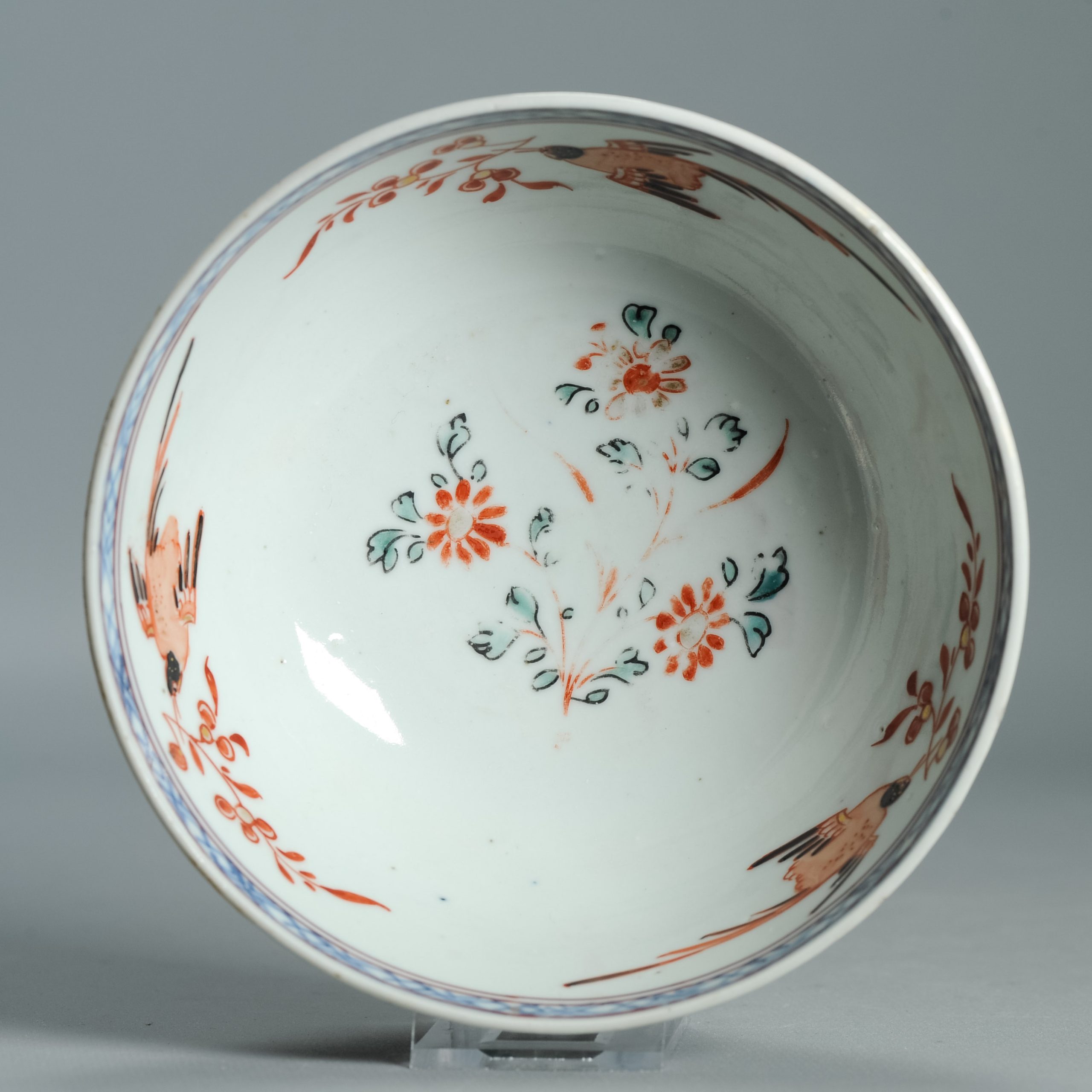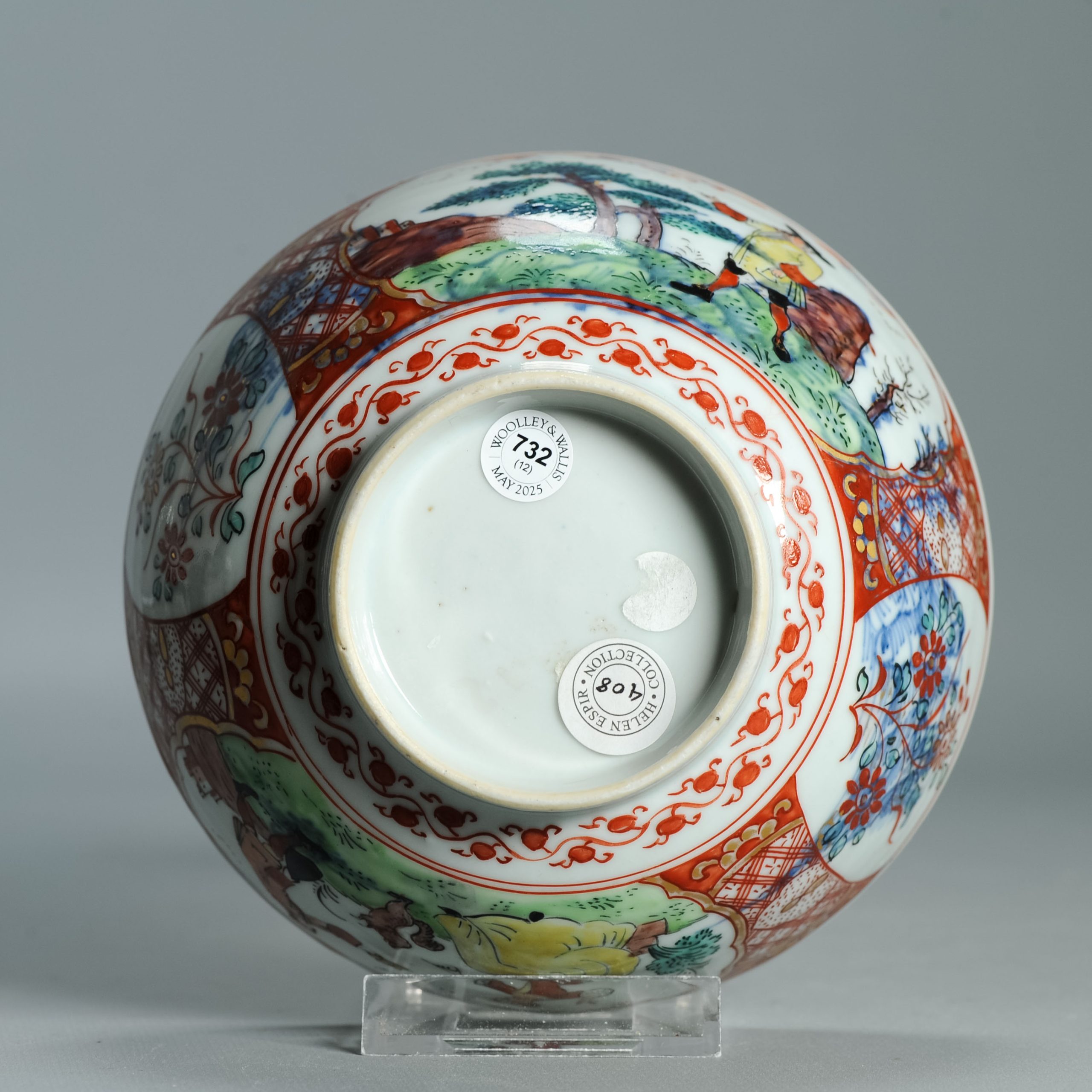1524 Antique Chinese Porcelain Blue and white Anhua Bowl with Pastoral Redecoration
Description:
1524 Antique Chinese Porcelain Blue and white Anhua Bowl with Redecoration
Diameter: 142mm approx
Period:1720-1730
Code: 110Provenance:
– Woolley and Wallis Asian Art II – 21 May 2025
– Helen Espir Collection
Reference:
Espir, Helen. European Decoration on Oriental Porcelain, 1700–1830. London/Lisbon: Jorge Welsh Books, 2005.In 18th-century visual language, these gestures are symbolic:
Removing the hat is a sign of respect, politeness, and deference – the man is greeting or honoring the lady.
Offering food or fruit (often apples, grapes, or lemons) represents courtesy, courtship, or affectionate approach.
The dog is a traditional emblem of faithfulness and affection (fides), especially in pastoral or gallant scenes.
Together they form a “scene of gallant love” — the man shows polite devotion to the woman, and the little dog underscores the fidelity and playfulness of their bond.
During the 18th century, under the influence of Rococo art, “pastoral love” became a fashionable theme in painting and decorative arts.
These were not real peasants, but urban fantasies of rustic simplicity — ideals of natural affection and refined manners.The courteous man (in urban dress, not a shepherd) brings an offering, removes his hat respectfully, and is greeted by a woman who responds kindly — a tableau of refined gallantry and mutual interest.
Additional Information
| Type | |
|---|---|
| Region of origin | China |
| China dynasty period | Qing (1661 – 1912) |
| Decoration type colour | Amsterdam Bont |
| Century | 18th century |
| Size | 12cm< |
| Emperor | Yongzheng (1722-1735) |
